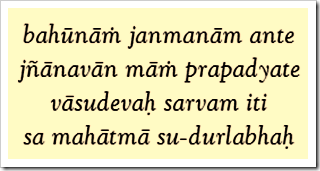By ELYN R. SAKS
Published: January 25, 2013
LOS ANGELES
THIRTY years ago, I was
given a diagnosis of schizophrenia.
My prognosis was “grave”: I would never live independently, hold a job, find a
loving partner, get married. My home would be a board-and-care facility, my days
spent watching TV in a day room with other people debilitated by mental illness.
I would work at menial jobs when my symptoms were quiet. Following my last
psychiatric hospitalization at the age of 28, I was encouraged by a doctor to
work as a cashier making change. If I could handle that, I was told, we would
reassess my ability to hold a more demanding position, perhaps even something
full-time.
Conventional psychiatric thinking and its diagnostic categories say that people like me don’t exist. Either I don’t have schizophrenia (please tell that to the delusions crowding my mind), or I couldn’t have accomplished what I have (please tell that to U.S.C.’s committee on faculty affairs). But I do, and I have. And I have undertaken research with colleagues at U.S.C. and U.C.L.A. to show that I am not alone. There are others with schizophrenia and such active symptoms as delusions and hallucinations who have significant academic and professional achievements.
Over the last few years, my colleagues, including Stephen Marder, Alison Hamilton and Amy Cohen, and I have gathered 20 research subjects with high-functioning schizophrenia in Los Angeles. They suffered from symptoms like mild delusions or hallucinatory behavior. Their average age was 40. Half were male, half female, and more than half were minorities. All had high school diplomas, and a majority either had or were working toward college or graduate degrees. They were graduate students, managers, technicians and professionals, including a doctor, lawyer, psychologist and chief executive of a nonprofit group.
At the same time, most were unmarried and childless, which is consistent with their diagnoses. (My colleagues and I intend to do another study on people with schizophrenia who are high-functioning in terms of their relationships. Marrying in my mid-40s — the best thing that ever happened to me — was against all odds, following almost 18 years of not dating.) More than three-quarters had been hospitalized between two and five times because of their illness, while three had never been admitted.
How had these people with schizophrenia managed to succeed in their studies and at such high-level jobs? We learned that, in addition to medication and therapy, all the participants had developed techniques to keep their schizophrenia at bay. For some, these techniques were cognitive. An educator with a master’s degree said he had learned to face his hallucinations and ask, “What’s the evidence for that? Or is it just a perception problem?” Another participant said, “I hear derogatory voices all the time. ... You just gotta blow them off.”
Part of vigilance about symptoms was “identifying triggers” to “prevent a fuller blown experience of symptoms,” said a participant who works as a coordinator at a nonprofit group. For instance, if being with people in close quarters for too long can set off symptoms, build in some alone time when you travel with friends.
Other techniques that our participants cited included controlling sensory inputs. For some, this meant keeping their living space simple (bare walls, no TV, only quiet music), while for others, it meant distracting music. “I’ll listen to loud music if I don’t want to hear things,” said a participant who is a certified nurse’s assistant. Still others mentioned exercise, a healthy diet, avoiding alcohol and getting enough sleep. A belief in God and prayer also played a role for some.
One of the most frequently mentioned techniques that helped our research participants manage their symptoms was work. “Work has been an important part of who I am,” said an educator in our group. “When you become useful to an organization and feel respected in that organization, there’s a certain value in belonging there.” This person works on the weekends too because of “the distraction factor.” In other words, by engaging in work, the crazy stuff often recedes to the sidelines.
Personally, I reach out to my doctors, friends and family whenever I start slipping, and I get great support from them. I eat comfort food (for me, cereal) and listen to quiet music. I minimize all stimulation. Usually these techniques, combined with more medication and therapy, will make the symptoms pass. But the work piece — using my mind — is my best defense. It keeps me focused, it keeps the demons at bay. My mind, I have come to say, is both my worst enemy and my best friend.
THAT is why it is so distressing when doctors tell their patients not to expect or pursue fulfilling careers. Far too often, the conventional psychiatric approach to mental illness is to see clusters of symptoms that characterize people. Accordingly, many psychiatrists hold the view that treating symptoms with medication is treating mental illness. But this fails to take into account individuals’ strengths and capabilities, leading mental health professionals to underestimate what their patients can hope to achieve in the world.
It’s not just schizophrenia: earlier this month, The Journal of Child Psychology and Psychiatry posted a study showing that a small group of people who were given diagnoses of autism, a developmental disorder, later stopped exhibiting symptoms. They seemed to have recovered — though after years of behavioral therapy and treatment. A recent New York Times Magazine article described a new company that hires high-functioning adults with autism, taking advantage of their unusual memory skills and attention to detail.
I don’t want to sound like a Pollyanna about schizophrenia; mental illness imposes real limitations, and it’s important not to romanticize it. We can’t all be Nobel laureates like John Nash of the movie “A Beautiful Mind.” But the seeds of creative thinking may sometimes be found in mental illness, and people underestimate the power of the human brain to adapt and to create.
Then I made a decision.
I would write the narrative of my life. Today I am a chaired professor at the University
of Southern California Gould School of Law. I have an adjunct appointment in
the department of psychiatry at the medical school of the University of
California, San Diego, and am on the faculty of the New Center for
Psychoanalysis. The MacArthur Foundation gave me a genius grant.
Although I fought my
diagnosis for many years, I came to accept that I have schizophrenia and will be
in treatment the rest of my life. Indeed, excellent psychoanalytic treatment and
medication have been critical to my success. What I refused to accept was my
prognosis. Conventional psychiatric thinking and its diagnostic categories say that people like me don’t exist. Either I don’t have schizophrenia (please tell that to the delusions crowding my mind), or I couldn’t have accomplished what I have (please tell that to U.S.C.’s committee on faculty affairs). But I do, and I have. And I have undertaken research with colleagues at U.S.C. and U.C.L.A. to show that I am not alone. There are others with schizophrenia and such active symptoms as delusions and hallucinations who have significant academic and professional achievements.
Over the last few years, my colleagues, including Stephen Marder, Alison Hamilton and Amy Cohen, and I have gathered 20 research subjects with high-functioning schizophrenia in Los Angeles. They suffered from symptoms like mild delusions or hallucinatory behavior. Their average age was 40. Half were male, half female, and more than half were minorities. All had high school diplomas, and a majority either had or were working toward college or graduate degrees. They were graduate students, managers, technicians and professionals, including a doctor, lawyer, psychologist and chief executive of a nonprofit group.
At the same time, most were unmarried and childless, which is consistent with their diagnoses. (My colleagues and I intend to do another study on people with schizophrenia who are high-functioning in terms of their relationships. Marrying in my mid-40s — the best thing that ever happened to me — was against all odds, following almost 18 years of not dating.) More than three-quarters had been hospitalized between two and five times because of their illness, while three had never been admitted.
How had these people with schizophrenia managed to succeed in their studies and at such high-level jobs? We learned that, in addition to medication and therapy, all the participants had developed techniques to keep their schizophrenia at bay. For some, these techniques were cognitive. An educator with a master’s degree said he had learned to face his hallucinations and ask, “What’s the evidence for that? Or is it just a perception problem?” Another participant said, “I hear derogatory voices all the time. ... You just gotta blow them off.”
Part of vigilance about symptoms was “identifying triggers” to “prevent a fuller blown experience of symptoms,” said a participant who works as a coordinator at a nonprofit group. For instance, if being with people in close quarters for too long can set off symptoms, build in some alone time when you travel with friends.
Other techniques that our participants cited included controlling sensory inputs. For some, this meant keeping their living space simple (bare walls, no TV, only quiet music), while for others, it meant distracting music. “I’ll listen to loud music if I don’t want to hear things,” said a participant who is a certified nurse’s assistant. Still others mentioned exercise, a healthy diet, avoiding alcohol and getting enough sleep. A belief in God and prayer also played a role for some.
One of the most frequently mentioned techniques that helped our research participants manage their symptoms was work. “Work has been an important part of who I am,” said an educator in our group. “When you become useful to an organization and feel respected in that organization, there’s a certain value in belonging there.” This person works on the weekends too because of “the distraction factor.” In other words, by engaging in work, the crazy stuff often recedes to the sidelines.
Personally, I reach out to my doctors, friends and family whenever I start slipping, and I get great support from them. I eat comfort food (for me, cereal) and listen to quiet music. I minimize all stimulation. Usually these techniques, combined with more medication and therapy, will make the symptoms pass. But the work piece — using my mind — is my best defense. It keeps me focused, it keeps the demons at bay. My mind, I have come to say, is both my worst enemy and my best friend.
THAT is why it is so distressing when doctors tell their patients not to expect or pursue fulfilling careers. Far too often, the conventional psychiatric approach to mental illness is to see clusters of symptoms that characterize people. Accordingly, many psychiatrists hold the view that treating symptoms with medication is treating mental illness. But this fails to take into account individuals’ strengths and capabilities, leading mental health professionals to underestimate what their patients can hope to achieve in the world.
It’s not just schizophrenia: earlier this month, The Journal of Child Psychology and Psychiatry posted a study showing that a small group of people who were given diagnoses of autism, a developmental disorder, later stopped exhibiting symptoms. They seemed to have recovered — though after years of behavioral therapy and treatment. A recent New York Times Magazine article described a new company that hires high-functioning adults with autism, taking advantage of their unusual memory skills and attention to detail.
I don’t want to sound like a Pollyanna about schizophrenia; mental illness imposes real limitations, and it’s important not to romanticize it. We can’t all be Nobel laureates like John Nash of the movie “A Beautiful Mind.” But the seeds of creative thinking may sometimes be found in mental illness, and people underestimate the power of the human brain to adapt and to create.
An approach that looks
for individual strengths, in addition to considering symptoms, could help dispel
the pessimism surrounding mental illness. Finding “the wellness within the
illness,” as one person with schizophrenia said, should be a therapeutic goal.
Doctors should urge their patients to develop relationships and engage in
meaningful work. They should encourage patients to find their own repertory of
techniques to manage their symptoms and aim for a quality of life as they define
it. And they should provide patients with the resources — therapy, medication
and support — to make these things happen.
“Every person has a
unique gift or unique self to bring to the world,” said one of our study’s
participants. She expressed the reality that those of us who have schizophrenia
and other mental illnesses want what everyone wants: in the words of Sigmund
Freud, to work and to love.
Source: New York Times
http://www.nytimes.com/2013/01/27/opinion/sunday/schizophrenic-not-stupid.html?_r=0
http://www.nytimes.com/2013/01/27/opinion/sunday/schizophrenic-not-stupid.html?_r=0
Posted by
Robert Karl Stonjek
Robert Karl Stonjek

 “This
is Sita, who is firmly dedicated to her husband and is the daughter of
the great soul Janaka, who is the King of Mithila and strictly adherent
to religious principles.” (Hanuman, Valmiki Ramayana, Sundara Kand,
16.15)
“This
is Sita, who is firmly dedicated to her husband and is the daughter of
the great soul Janaka, who is the King of Mithila and strictly adherent
to religious principles.” (Hanuman, Valmiki Ramayana, Sundara Kand,
16.15) In
this verse from the Ramayana Shri Hanuman confirms to himself that he
has spotted Sita. Hanuman is in a grove of Ashoka trees inside of the
kingdom of Lanka, which was presided over at the time by the Rakshasa
king Ravana. Hanuman doesn’t say that he has found the material body or
the “Sita” within. He refers to Sita by her identifiable features, which
are perceivable and understandable to the sober person who has no
intention of twisting the truth to suit their personal needs.
In
this verse from the Ramayana Shri Hanuman confirms to himself that he
has spotted Sita. Hanuman is in a grove of Ashoka trees inside of the
kingdom of Lanka, which was presided over at the time by the Rakshasa
king Ravana. Hanuman doesn’t say that he has found the material body or
the “Sita” within. He refers to Sita by her identifiable features, which
are perceivable and understandable to the sober person who has no
intention of twisting the truth to suit their personal needs. “After
many births and deaths, he who is actually in knowledge surrenders unto
Me, knowing Me to be the cause of all causes and all that is. Such a
great soul is very rare.” (Lord Krishna, Bhagavad-gita, 7.19)
“After
many births and deaths, he who is actually in knowledge surrenders unto
Me, knowing Me to be the cause of all causes and all that is. Such a
great soul is very rare.” (Lord Krishna, Bhagavad-gita, 7.19)


